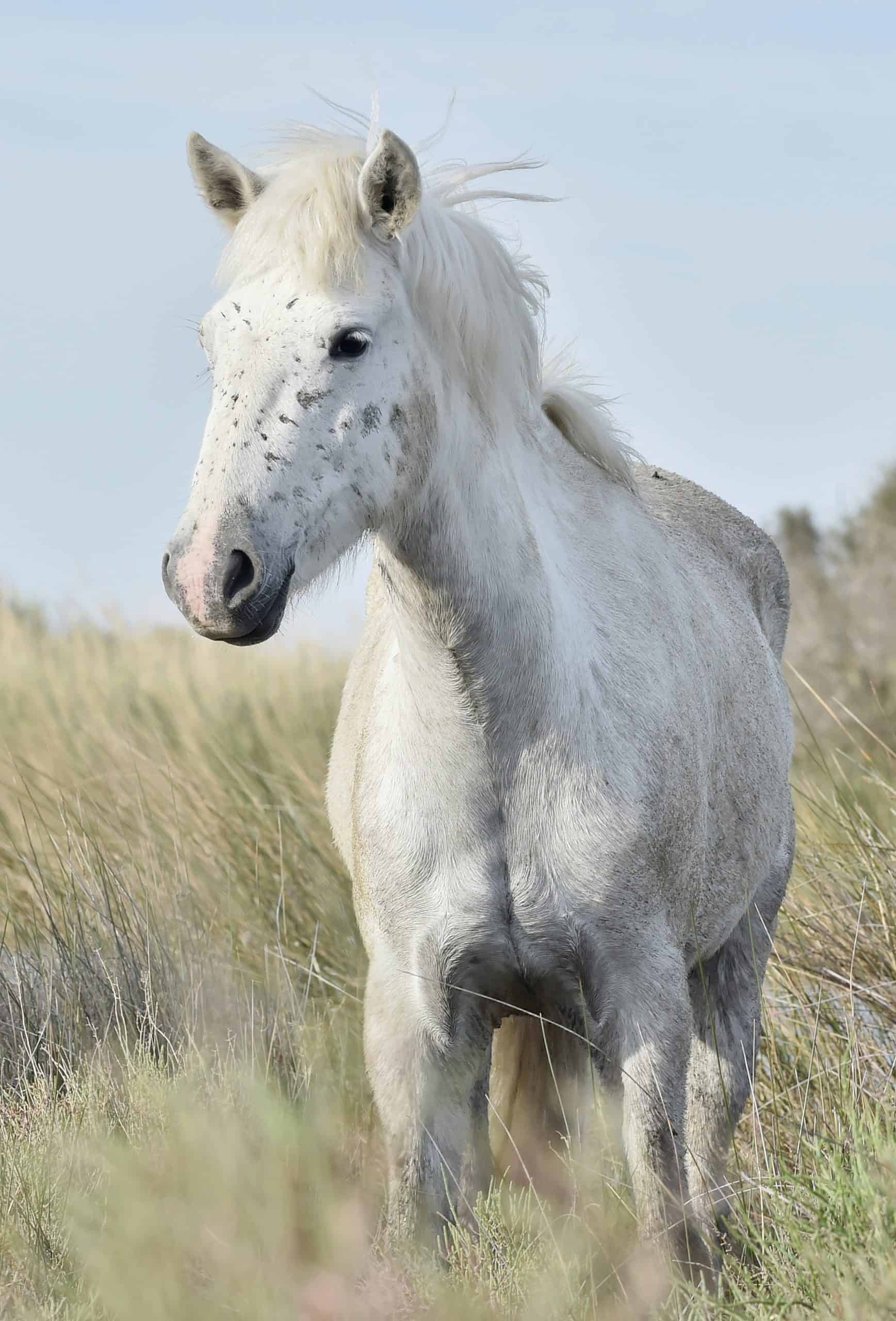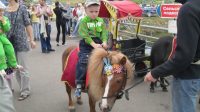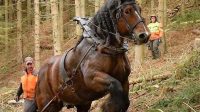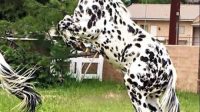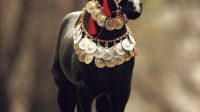If you ever have the opportunity to visit Southern France, be sure to take in the Camargue Natural Park. Located by the Mediterranean Sea, the park is full of wetlands and marshes. However, what draws the horse enthusiasts and photographers to the park are the Camargue horse herds. Visitors from all over the world go to view and photograph these beautiful, intelligent, graceful horses. So, we decided to take a look at the history of these beautiful horses and what makes them so unique.
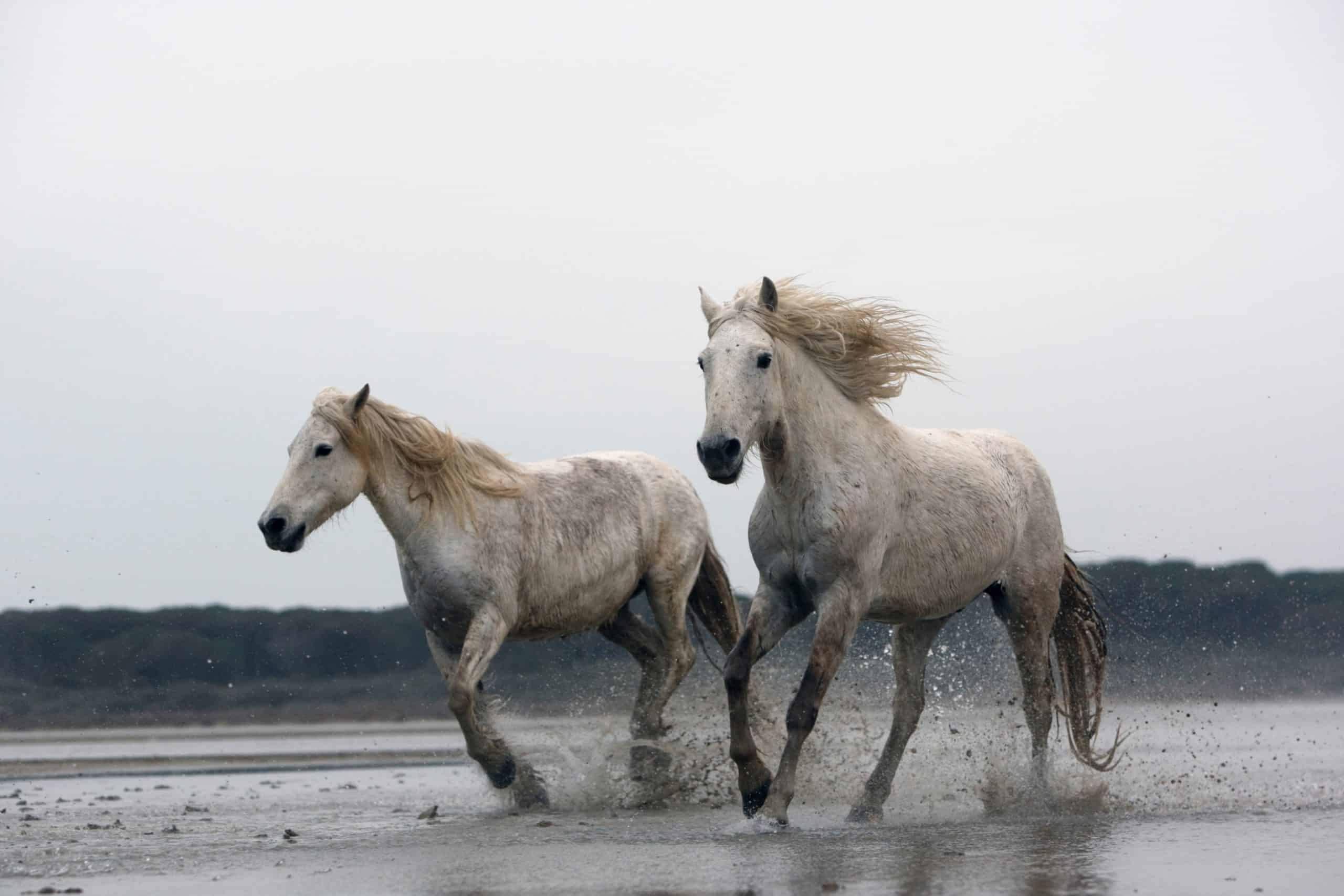
Southern France was proven to be the home of prehistoric horses. The Camargue horse is thought to carry this lineage. Archaeological finds from the Burgundy area of France reinforce this fact. This evidence makes the Camargue horse breed one of the oldest breeds in the world, having been around for thousands of years.
Legend states that the Camargue was a present from Neptune to be man’s faithful companion. It wasn’t until 1976 that the French government set standards for the breed. Eventually, in 1978, a studbook was established. Today, the horse breed is bred under the standards and strict rules of the association. This is an effort to keep this ancient breed of horses as pure as possible.
The Biological Research Station of la Tour du Valat oversees and protects the horses. There are still wild herds, but some horses have been domesticated and are used for many different riding disciplines. Additionally, these horses are semi-protected in Camargue National Park.
Brown at birth, the Camargue horse changes to the traditional white color around the age of four. Genetically this is considered a grey color. This is why some of the horses do not appear a pure white. At an average height of 13 to 14 hands, the Camargue horse falls into the category of a pony. Like the primitive horse, Camargue horses have heavy square heads.

Much like the North American Mustang, centuries of natural selection has enabled the Camargue horses to become resilient. They are able to survive the substandard nutrition and the sometimes-hostile conditions of the marshes they live in. Despite being short in stature, these horses are sturdy, can easily travel long distances, go extended periods without food, and withstand hazardous conditions. They are ideal horses for endurance and trail riding.
There is evidence of Arabian and Barb horse breeds visible in the shape of some of the horses’ heads and conformation. The horses’ stout, rugged bodies have straight shoulders, a deep chest, and a short back. They weigh around 650 to 900 pounds. Additionally, this weight is carried on powerful, capable legs.
The necessity to adapt to a wet environment has made the breed’s feet evolve into broad, healthy hooves that withstand moisture. They are also less likely to develop the hoof problems of other breeds of horses. Because of this, it is not necessary to put horseshoes on these horses. Nicknamed “the horse of the sea,” these horses love the water, another effect of living in the marshes.
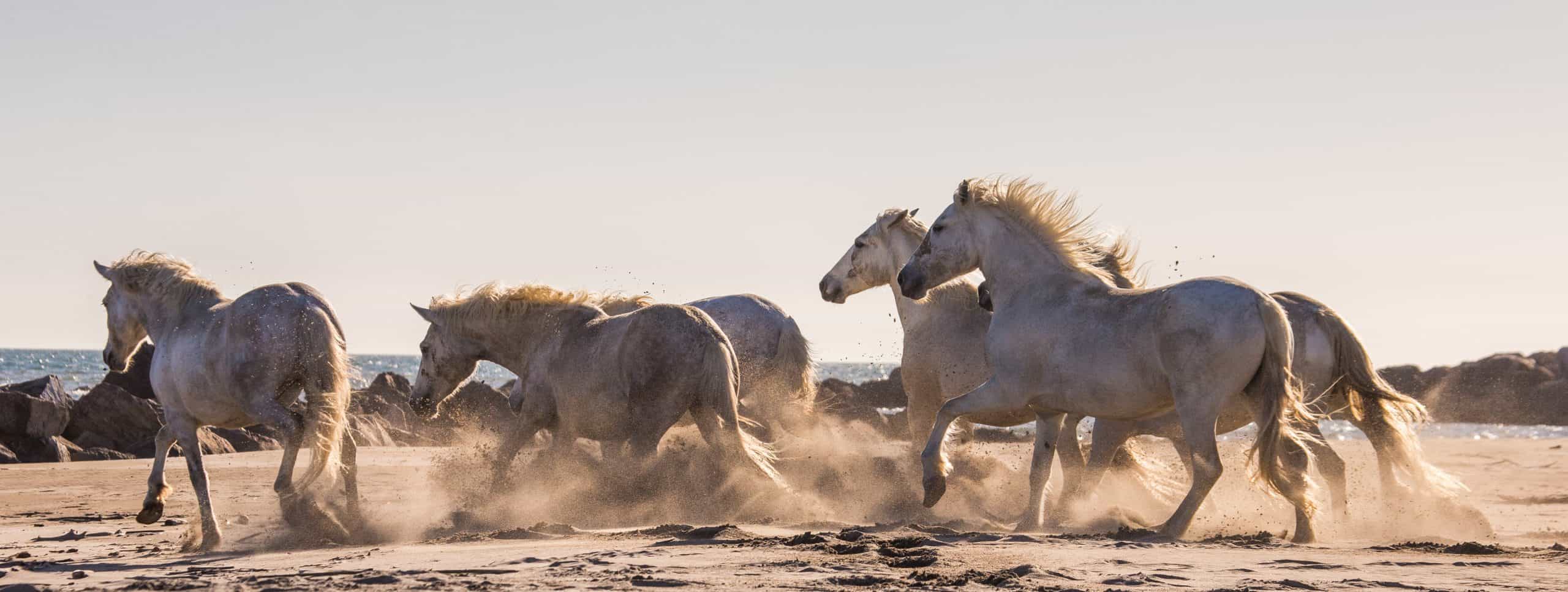
Playing a large part in the Camargue culture, there is evidence of the Camargue horse at every turn. The herdsmen of the Camargue region are called Gardians. They live similar lives to the traditional North American cowboy of the 1800s. Additionally, they play a big part in carrying on Camarguais traditions. Their mount of choice is the Camargue horses.

Their even-temperament, sturdy nature, and bravery make Camargue horses ideal for herding the Camargue bulls of the region. These feral bulls are often used for bullfighting in southern France.

